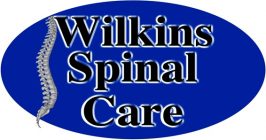SPINAL STENOSIS: AN EVIL CONFINED SPACE
Imagine driving through a tunnel and suddenly, the walls and ceiling begin to come closer together and narrow. What do you think is going happen? Well, for one, not as many vehicles will be able to fit inside but think about the vehicles that are already inside the tunnel. It will begin to get crammed and trapped in, right? This is how nerves and blood vessels feel when they are trapped in a tiny, confined space with nowhere to go. In this week’s blog, we will discuss what spinal stenosis is and how we can treat it.
What is Spinal Stenosis?
Before we can define what spinal stenosis is, we need to first define the term, “stenosis.” Stenosis is a fancy medical term that means something has narrowed. Therefore, spinal stenosis is narrowing of the spinal canal. Stenosis can occur from a number of things such as severely degenerated vertebra, disc bulges/herniations, congenitally small openings, etc. There are two different types of spinal stenosis that are easily identifiable on imaging, but hard to distinguish by doing an orthopedic examination because they present the same symptoms.
- Central Canal Stenosis-narrowing that causes compression and inflammation on the spinal cord.
- Foraminal (Lateral) Stenosis- narrowing that causes compression and inflammation on a spinal nerve.
The question is, “how do you know its spinal stenosis and not something else? That’s a great question because it very well could be something else. It could be generalized low back/neck pain, disc problems, degenerative disc disease, arthritis, facet syndrome, etc. All of these conditions can present with the same symptoms: sharp pains, numbness/tingling, burning sensations, muscle weakness and organ malfunction. Just like identifying a disc injury, an MRI is the gold standard tool to identify spinal stenosis. You can see foraminal stenosis on an x-ray, but it’s always better quality looking at these conditions on an MRI.
How To Treat Spinal Stenosis?
There at two sides of the medical field; The MD side and the chiropractic side. Shocker, right? Medical doctors will follow the traditional route: anti-inflammatory drugs, steroid injections, opioids and then surgery. This is the consistent trend we have been discussing in blogs each week. Just like we say each week, is there a better and cheaper solution to end long-term debilitating pain?
I bet you know the answer. Of course there is! Our non-surgical spinal decompression service is for more than just disc injuries. It is used for several different spinal conditions that leave patients suffering such as spinal stenosis.
Just like every patient who walks into our doors, patients with spinal stenosis go through a vigorous consultation and examination to formulate a diagnosis and create an appropriate treatment plan. Sometimes, however, patients who have spinal stenosis don’t need decompression. Rather, they may need something as simple as a chiropractic treatment plan. The longer someone is in pain, the longer and harder it is to treat. The protocol is less intense for a patient who has been dealing with spinal stenosis for a few months versus someone who has been dealing with it for years.
Here is our biggest take home message from this week’s blog: If you or someone you know are tired of living in pain and have tried just about anything to do just that, please consider non-surgical spinal decompression. It could be your saving grace. You will relentlessly hear this over and over again in several blogs because we cannot stress enough how much time and money you will save using this extremely successful treatment. Whether it’s a disc injury, spinal stenosis or another debilitating spinal condition, we can help! Even if you are not a candidate for decompression, realize that chiropractic can help as well. If you have any questions about spinal stenosis and treatment options, please feel free to call us at (724) 547-3377 and checkout our website at www.drlarrywilkinsspinalcare.com for more content.
Yours In Health,
Larry E. Wilkins, DC
Brian M. Steinert, DC
